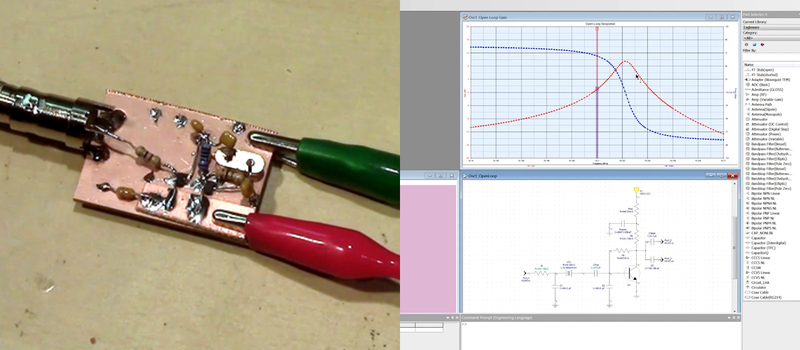[Craig] wanted to build a 19.2 MHz crystal oscillator. He knew he wanted a Pierce oscillator, but he also knew that getting a good design is often a matter of trial and error. He used a 30-day trial of a professional simulation package, Genesys from Keysight, to look at the oscillator’s performance without having to build anything. He not only did a nice write up about his experience, but he also did a great video walkthrough (see below).
The tool generates a sample schematic, although [Craig] deleted it and put his own design into the simulator. By running simulations, he was able to look at the oscillator’s performance. His first cut showed that the circuit didn’t meet the Barkhausen criteria and shouldn’t oscillate. Unfortunately, his prototype did, in fact, oscillate.
[Craig] explains why the initial simulation (which is open loop) doesn’t match the real-world circuit, which is quite instructive. By using an equation from a paper by Randall and Hock, he was able to get a more realistic simulation.
We’ve covered oscillator fundamentals before, but [Craig’s] video walkthrough of a professional tool is too good to miss. If you can’t afford the $4700 base price for Genesys (options are extra), you can always try Spice.















Can you do this sort of thing with the Xcos Environment and RF toolbox in http://www.scilab.org/ ?
I started looking for info and found this, “The Barkhausen Stability Criterion is simple, intuitive, and wrong.”
http://web.mit.edu/klund/www/weblatex/node4.html
And this is why real non-trivial circuits always have to be actually prototyped.